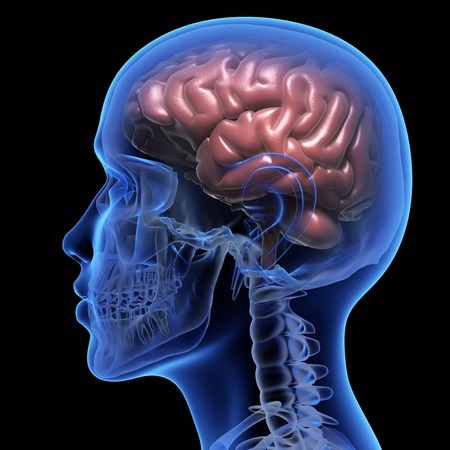Psychodynamic Therapy
What is Psychodynamic Therapy?
Our lives consist of the sum of all the experiences that we’ve ever had. Each experience leaves a mark, either positively or negatively. Over time, these experiences build up and create habits or patterns of behavior. As human beings, we usually tend to carry on living without pausing to understand how our experiences have shaped us. Some of the habits and patterns of behavior that are formed can become very hard to break out of.
Psychodynamic therapy examines the process behind certain behaviors and the reason(s) for those behaviors. It digs deep in a bid to answer the question: “Why are you who you are? What experiences shaped you into the person who you currently are?”.
The brain tends to bury painful or traumatic memories and events. When this happens, we often subconsciously develop coping mechanisms, so we don’t have to confront these painful emotions. This is commonly referred to as ‘denial’ or ‘projection’. People usually aren’t aware of doing it.
Psychodynamic therapy, sometimes referred to as psychodynamic counseling or insight-oriented therapy, is centered on self-awareness and understanding how past events or trauma currently affect a person. Psychodynamic therapists help people gain insight by helping them recognize certain patterns that have developed over time.
Psychodynamic Theory
Psychodynamic therapy developed from the theories of Sigmund Freud, who believed that our childhood experiences are significant, and they continue to have an impact on us during adulthood. He posited that the human mind has three parts:
- The id, made up of natural instinct and forms the unconscious mind
- The superego, which is the moral part of the brain that contains our beliefs of right and wrong
- The ego, which is the bridge between the animal instinct of the id and the refined moral thoughts of the superego (Haggerty, 2016)
This hypothesis led to the logical conclusion that his theory is based on: Our personalities are formed through our childhood experiences.
Freud’s hypothesis was that these components developed in certain stages of childhood. He believed that we are born with the id, the ego is developed when we are toddlers and the superego comes around the age of five. Freud also believed that the development of each component is significantly influenced by relationships, such as family relationships and the environments. These factors could aid the development of a healthy sense of self or lead an individual to exhibit dysfunctional behavior. Basically, Freud believed that human behavior is driven by that which is buried deep within the mind. He called this the unconscious mind.
Based on this, Freud believed that to truly solve human problems, we must find the roots of the problems in the unconscious mind. The unconscious mind houses our innermost beliefs, thoughts, and patterns of behavior developed in childhood. It is upon this foundation that Psychodynamic Theory is established. Many of the themes in the psychodynamic approach mirror Freud’s theories:
- The unconscious mind controls human behavior and emotion
- Every behavior is influenced by something
- Childhood experiences shape who we become as adults
These theories have formed the basis of psychodynamic therapy and greatly influenced the methods and techniques that are used.
How Does Psychodynamic Therapy Suggest The Mind Works?
Proponents of psychodynamic therapy believe that the way we behave is influenced by both conscious and unconscious motives and that by talking about their problems and experiences, people find ways of understanding how their past influences their present behavior.
How does Psychodynamic Therapy Cause Change?
The fundamental goal of psychodynamic therapy is to bring painful memories and events that have been buried in the subconscious mind to the conscious mind by helping individuals to unravel and experience these feelings so they can be resolved. In essence, Psychodynamic therapy helps individuals:
- Develop self-awareness.
- Understand the past.
- Realize how the past has influenced and shaped the present.
- Understand the reasons they act the way they do.
- Feel better equipped to handle life, and be the best person they can be.
What Happens In a Texas Care Psychodynamic Therapy Session?
As explained above, Psychodynamic therapy is a process which aims to understand how the subconscious such as traumatic experiences and events that have been suppressed, affect a person’s behavior. To do this, psychodynamic therapy uses the relationship that exists between the therapist and the client. This relationship is built on trust and openness and unconditional acceptance. Your Texas Care therapist creates an enabling environment that encourages the patient to open up and share freely. The direction that the therapy session takes is usually governed by how the patient is feeling at that moment. The patient is encouraged to talk about their feelings, emotions, fears, and desires with minimal interruption from the therapist. As the patient does this, patterns of behavior that are rooted in past experiences, emerge. The therapist guides the patient in seeing how past experiences are currently affecting them and helps the patient develop the ability to deal with these issues in a healthy manner.
Techniques Used In Psychodynamic Therapy
Psychodynamic therapy sessions can last for months or years. Although it’s typically less intense than psychoanalysis, it uses similar techniques to psychoanalytic therapy. These techniques are used by therapists to help patients understand how their mind works, and they include the following:
Free Association: This technique is very simple, yet very effective. It involves letting the patient lead the discussion in a psychodynamic therapy session. The patient is encouraged to talk freely to the therapist by saying the first thing that they think of. It’s spontaneous and allows true thoughts and feelings to emerge without restraint. It allows the patient to share how they truly feel without any form of censorship.
Therapeutic Transference- This kind of therapy is heavily focused on deep-rooted and intense emotions, so it’s likely that those feelings will manifest in the relationship between the therapist and the patient. Depending on the types of feelings, the patient may begin to feel a range of emotions such as love, hate, distrust, or anger towards the therapist. These feelings usually mirror the feelings that the patient has towards the cause of their problems. By being able to recognize and explore this relationship, the patient will begin to understand how and why they feel the way they do.
Interpretation- The therapist generally lets the patient lead the direction of the conversation, and usually listens quietly. Though, occasionally the therapist may interject with thoughts about the topics the patient chooses to discuss.
For more information on Psychodynamic Therapy or other Texas Care treatment services, feel free to call 1-88-98TODAY and an Intake Coordinator will be happy to take your call and direct you to the appropriate department. Visit our FAQ page for more information on how Telehealth, Telemedicine, and TeleBehavioral Health can work for you.















